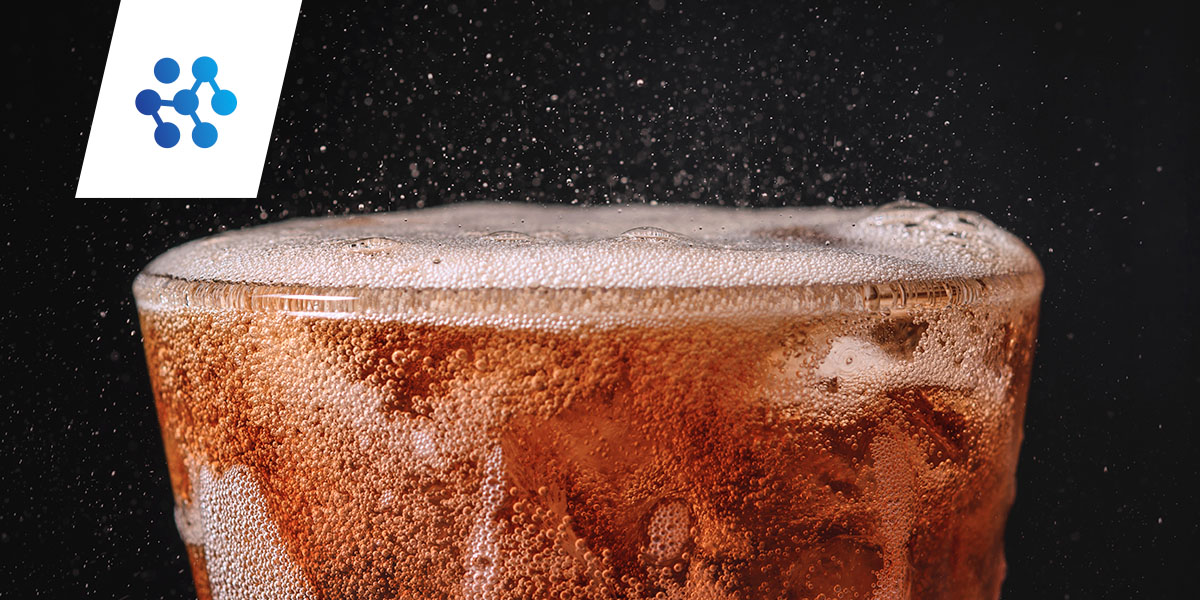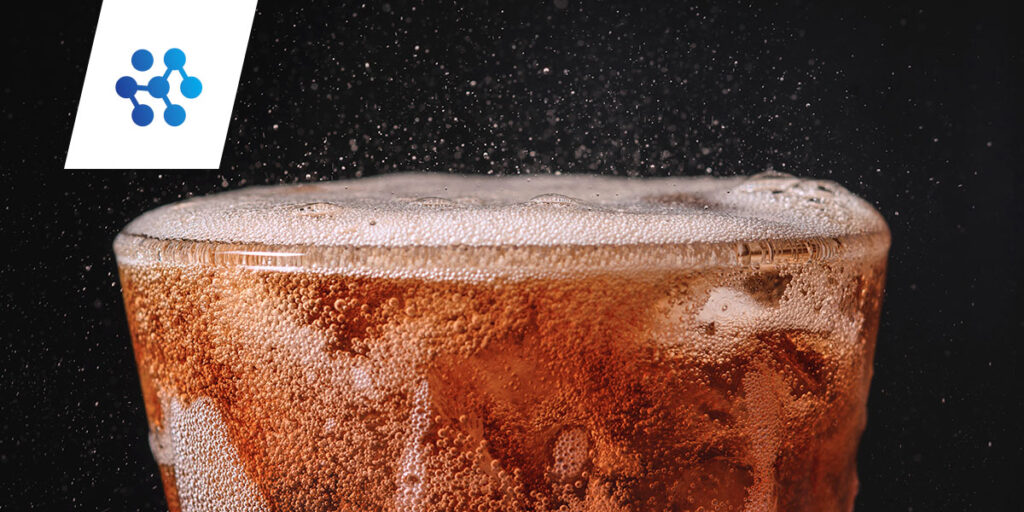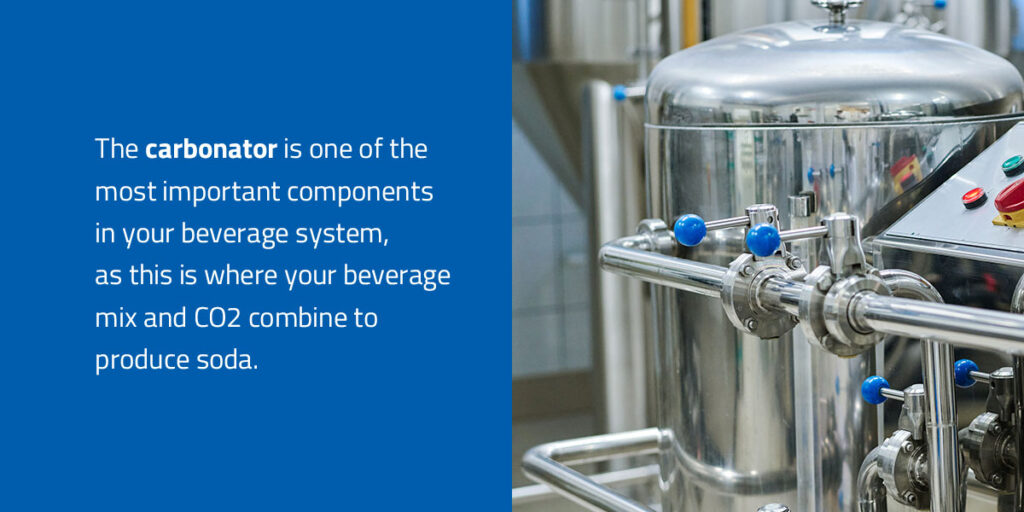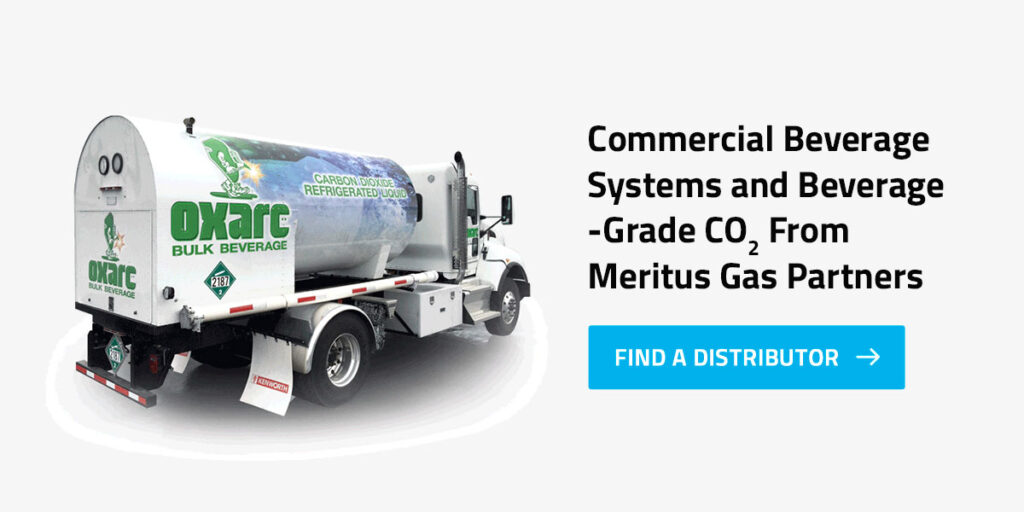

Carbonation is crucial to the beverage industry as it allows you to offer a range of drinks to suit diverse client tastes. Through carbonation, you can produce sodas, sparking water, fizzy fruit juices and even alcoholic beverages. By carbonating beverages, you can boost a drink’s taste, aroma and mouthfeel.
Successfully carbonating soda involves understanding how carbonation techniques work and having the right equipment for commercial soda carbonation. This guide to soda carbonation explores the chemical process of carbonation, including the role of carbon dioxide (CO2), essential equipment and how to maintain beverage systems.
There are two main carbonation methods in the beverage industry — bottle carbonation, also called bottle conditioning, and forced carbonation.
Bottle carbonation is used for alcoholic beverages. You add sugar to a fermented drink and allow the yeast to convert the sugar into CO2. This process is time-consuming and labor-intensive and is not suited for carbonating soda.
Forced carbonation is the most effective way of carbonating drinks to make soda. In this method, you use a bulk CO2 storage system and a carbonator tank, which is a pressurized vessel, to pump pressurized CO2 gas into your liquid. For soda, the liquid is a concentrated flavoring or beverage base combined with water and a sweetener to form a syrup. A carbonator pumps the CO2 gas to dissolve it into the liquid in the pressurized tank. The pressurized, dissolved CO2 gives soda its characteristic bubbles and fizz.
Depending on your commercial setup, you will either store your drinks in a pressurized system with a dispenser — like you would see in fast food chains with soda fountains — or bottle your beverage under pressure to ensure it does not go flat.
To make carbonated drinks commercially, you need to use beverage-grade CO2. The Food and Drug Administration sets the criteria and standards for beverage-grade CO2 to ensure it is suitable for consumption. Generally, the gas should be purified to be suitable for its intended use, free of contaminants, and tested and analyzed to avoid an unpleasant taste or odor.
Sourcing your CO2 from a reputable provider helps ensure that the gas is suitable for your sodas.
Implementing the appropriate safety measures in any industry that works with CO2 gas and pressurized gases is essential. CO2 is an asphyxiant because it displaces oxygen. Doing the following is crucial to working more safely with CO2 and pressurized gas:
Different beverages have differing carbonation levels, which affect their overall characteristics and properties. For example, sodas generally have higher carbonation levels than sparkling water. Beers, sparkling wines, champagnes and cocktails also have different carbonation levels.
You can use a pressure gauge or carbonation meter to measure the carbonation in your beverages. Soda generally has between 3 to 4 volumes or the equivalent of 6 to 8 gallons per liter of CO2. It is important to remember that you can vary these levels depending on the type of drink you are producing and how that will match your customers’ preferences.

The right equipment is essential for forced carbonation techniques to produce commercial sodas. The carbonator is one of the most important components in your beverage system, as this is where your beverage mix and CO2 combine to produce soda.
Choosing the right size beverage carbonation tank is essential for meeting your production demands and having a system you can maintain. Speaking to a professional about the right beverage system for you can help you determine the right size for your productions. You can also explore customizable beverage system solutions that cater to your industry, whether you’re a beverage distributor or own a commercial establishment.
Another essential piece of equipment is a backflow preventer that stops the carbonated liquid from pushing back into the potable water supply. A backflow preventer is critical if you have systems with copper water lines or pipes, as the carbonated liquid can erode the copper and contaminate the potable water.
Maintaining your beverage systems is key to your equipment’s longevity and efficiency. Thoroughly and regularly cleaning your system can help you keep it in top condition.
Like any technique, you may encounter a few common issues when carbonating soda. Thankfully, most of these concerns are simple to troubleshoot:
The Brix scale is a way of measuring the sugar content in food and beverages. Advanced calibration techniques like Brix calibration can help you fine-tune the taste of your drinks. Brix calibration is a way of adjusting the water-to-syrup ratio for each of your soda flavors.
An indication that you may need Brix calibration is if customers say the soda is too sweet or too watery. This regulation solution is an excellent method for quality control and producing consistent beverages.

Carbonating sodas on any production level becomes far more efficient with the right techniques and equipment. Your soda production can also become more efficient and professional with proper equipment maintenance, advice and support.
At Meritus Gas Partners, our reputable partners are reliable gas distributors who will assist you every step of the way when purchasing a quality beverage system. Whether you’re in the business of sodas or alcoholic beverages, we have systems and solutions for carbonated drinks, from CO2 Mini-Systems to bulk systems and quality gas blends.
Visit any of our affiliated branches or contact us today for expert guidance on soda carbonation equipment and industrial gas supplies.